


Framed or unframed, desk size to sofa size, printed by us in Arizona and Alabama since 2007. Explore now.
Shorpy is funded by you. Patreon contributors get an ad-free experience.
Learn more.

- Freeze Frame
- Texas Flyer wanted
- Just a Year Too Soon
- WWII -- Replacing men with women at the railroad crossing.
- Yes, Icing
- You kids drive me nuts!
- NOT An Easy Job
- I wonder
- Just add window boxes
- Icing Platform?
- Indiana Harbor Belt abides
- Freezing haze
- Corrections (for those who care)
- C&NW at Nelson
- Fallen Flags
- A dangerous job made worse
- Water Stop
- Passenger trains have right of way over freights?
- Coal
- Never ceases to amaze me.
- Still chuggin' (in model form)
- Great shot
- Westerly Breeze
- For the men, a trapeze
- Tickled
- Sense of loneliness ...
- 2 cents
- Charm City
- What an Outrage
- Brighton Park
Print Emporium
Needle's Eye: 1943
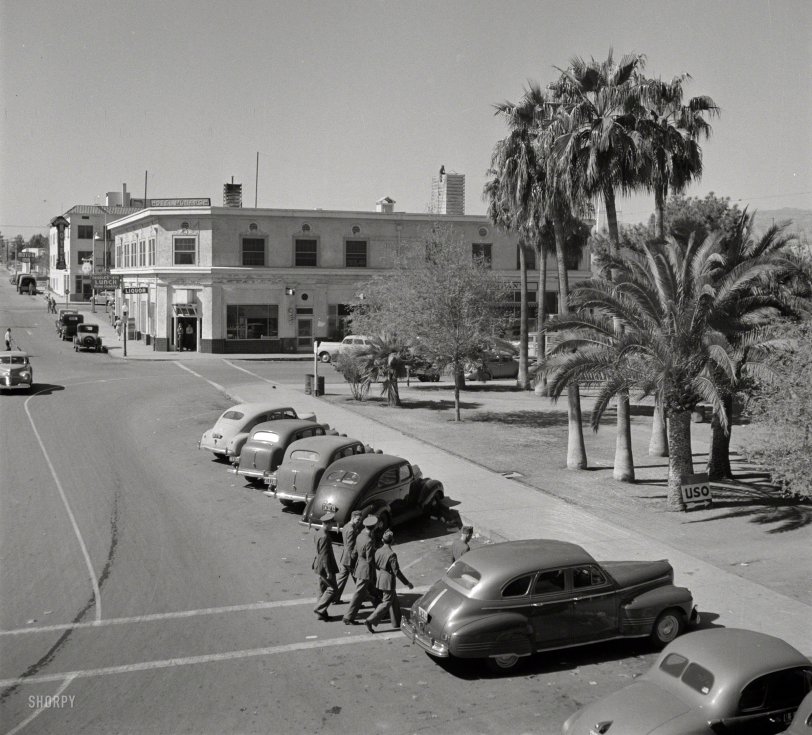
March 1943. Needles, California. "General view of street leading to depot of the Atchison, Topeka & Santa Fe Railroad." Photo by Jack Delano. View full size.
Needles Today...
The soldiers in this picture were most likely stationed at the Needles Army post located between the Riverview Cemetery and what is now Needles Airport on the road going to Blythe. They would be going to the U.S.O. located inside the El Garces Hotel (Harvey House), which also serves as the passenger train station (it was completely refurbished in 2014 and serves as an Amtrak station and office space, although the only office space being used now is for the local city bus company).
Most of the buildings in the picture are still around. Some are abandoned but available for reuse. We are looking south on F Street from Front Street, which jogs around Santa Fe Park via F and G Streets. Looking at the postcard here, the building on the left, at the corner of F and Front Streets is the Needles Point Pharmacy along with some other businesses. Beyond that (during wartime) there was a service station at the northeast corner of Broadway and F Street.
Across the street from that is the Needles Theater (Cinema)/Masonic Lodge (the local Masons built it in 1929 as a dual purpose building). The theater closed down many years ago and the Masons no longer meet in Needles. However, the marquee still works and it can be rented for messaging. On the other side of F Street, where the palm trees are is Santa Fe Park, which is in front of El Garces Hotel (Harvey House). There aren't as many palm trees today.
We cross Front Street as it jogs around Santa Fe Park. Here we see the Needles Point Liquor Store (complete with loyal customers at the front door) and then we see the Needles Eye Lunch. This is the Butler Building and it's all abandoned but it's serviceable. Beyond the Needles Eye Lunch we see a Shell Station and the northwest corner of F Street and Broadway. This is now where Needles Glass and Mirror do business. Across the street from that we see the Hotel California, which burned down in 1952. Today that site serves as the parking lot for the Frontier Phone Company.
Beyond that is Robinson's Motor Inn (cottages) which is now Robinson's Apartments. (Three of the old 1930s motels became apartment complexes.) Needles Point Drug and Liquor Stores are now neighbors on Broadway to the southwest of this picture. The former site of the Needles Point Drug Store is now property of the Needles Unified School District. There are still other businesses in that building, including a beauty salon. The solid white line down the middle of the street is now a double yellow line. The crosswalk from the drug store to the park no longer exists. Only parallel parking is allowed on Needles streets today.
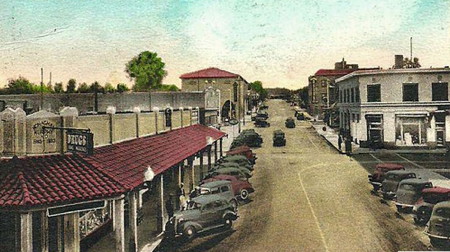
Updated ID
The 1939 Ford is definitely a Tudor and not a De Luxe Tudor. The De Luxe models are easy to spot because the headlights are in the fenders, not between the fender and hood as shown here.
The 1941 Pontiac is a De Luxe "Torpedo" Four Door Sedan and not a Streamliner. In addition to there being a definite break between the roof line and the trunk, the side trim on the De Luxe ends in a straight line, parallel to the ground, before the trunk begins. The Streamliner, which is a true fastback, has side trim which extends far beyond the trunk top, dips down towards the rear bumper, and follows the fender line.
Also of note, the fender skirt shown on the Pontiac is a standard accessory that was shown in the Pontiac catalog. Photos of everything below.
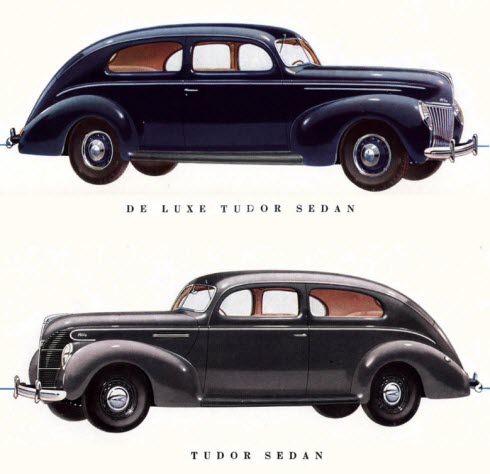
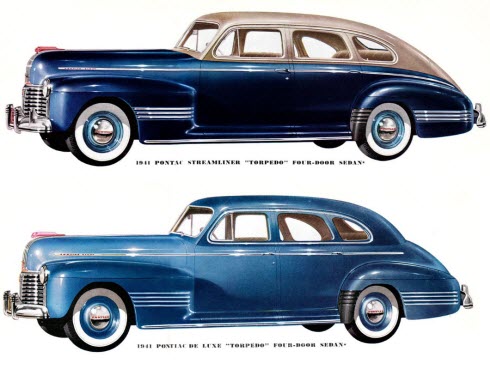
Cooling towers
The structures atop both hotels resembling inverse pagodas are cooling towers, as no decent hotel in a place like Needles could have done any business without some kind of comfort cooling. They may be water-cooled condensers for refrigerated systems, or they may be just plain old "swamp coolers"; it's impossible to tell from this evidence alone. From what I've seen and been told, the louvers on the sides were usually made of wood, probably cedar or cypress. The man straddling the foreground tower attests to the intensive maintenance that these systems required, while the tower in the background may have emanated the warm smell of colitas.
The Joads, of course, drove past this place at night, after spending the searing hot desert afternoon immersed in the Colorado River, the poor man's air conditioning.
ID for Cars
We often hear it said that today's cars are not distinctive enough to ID. That was also true in the 30's, especially from the rear!
To the right of the fellas on their way to the USO Club is a nice new 1941 Pontiac Streamliner "Torpedo" Four-Door Sedan. With a nice pair of non-factory fender skirts as well.
To their left is a 1939 Ford Tudor. Can't tell if it is a Deluxe as we cannot see the right tail light - or lack thereof.
Less ornate today.
I am certain this is the location, with all the charm thoroughly removed:
























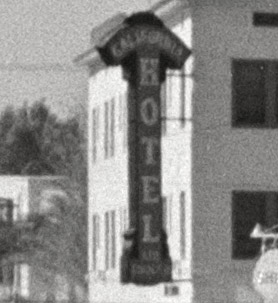
On Shorpy:
Today’s Top 5